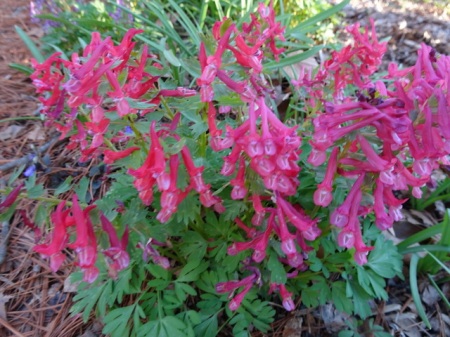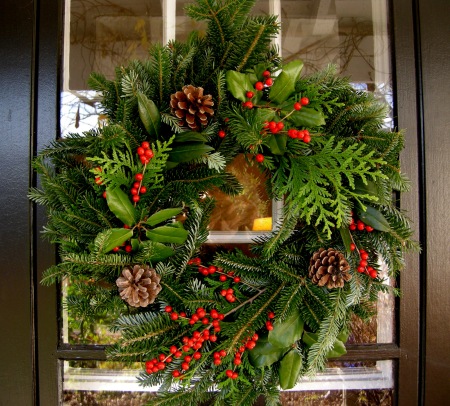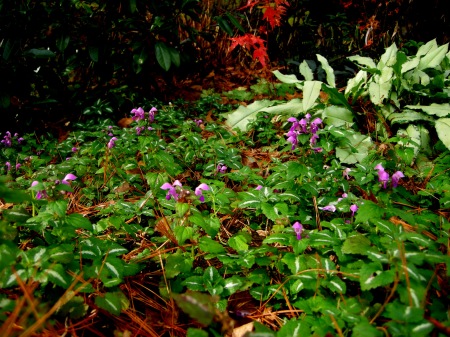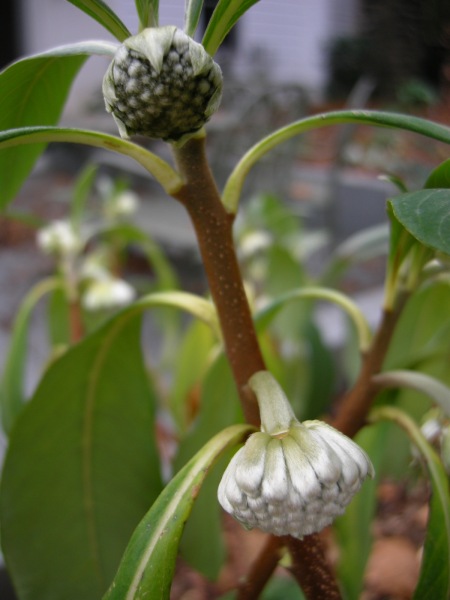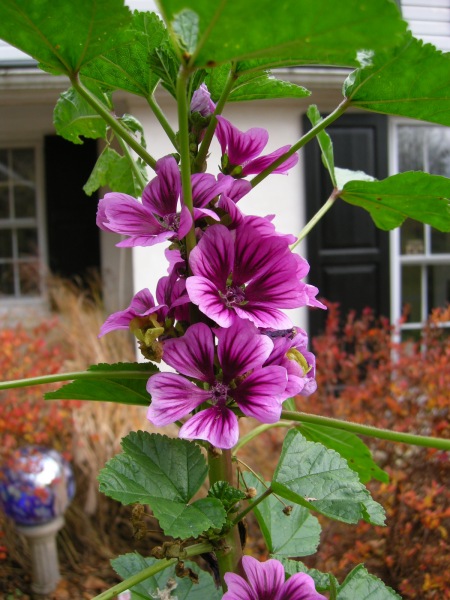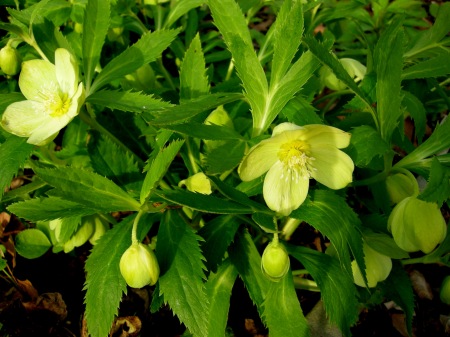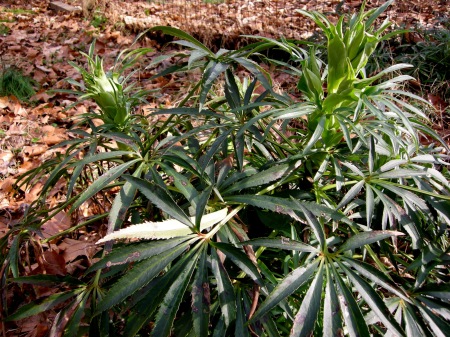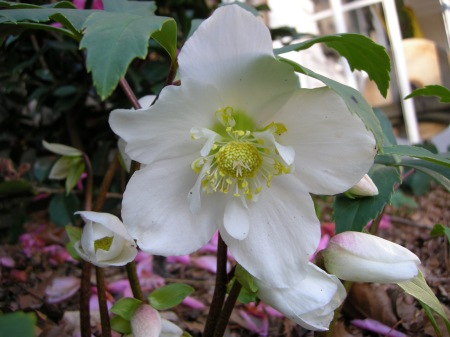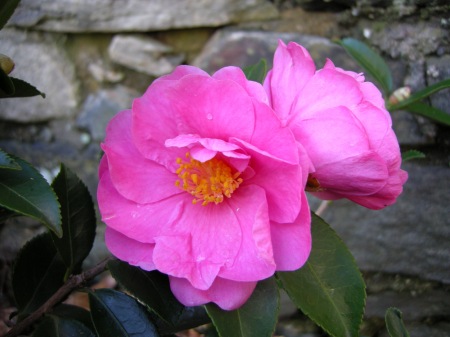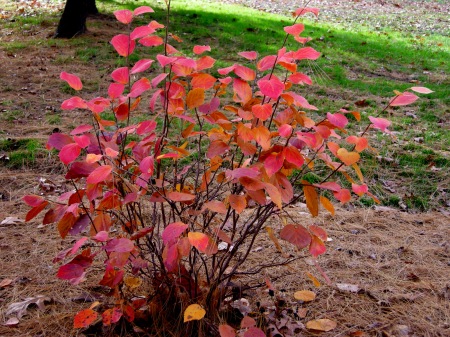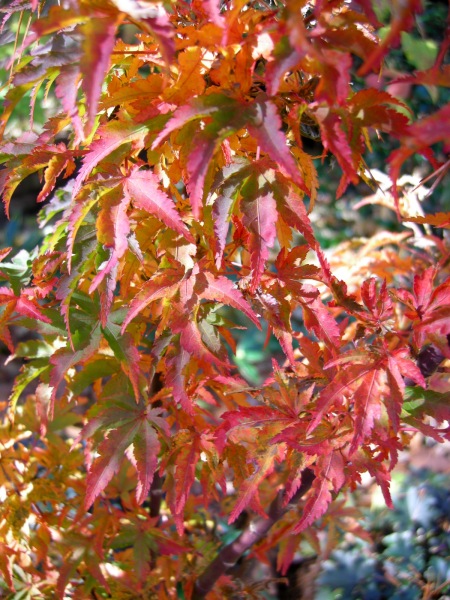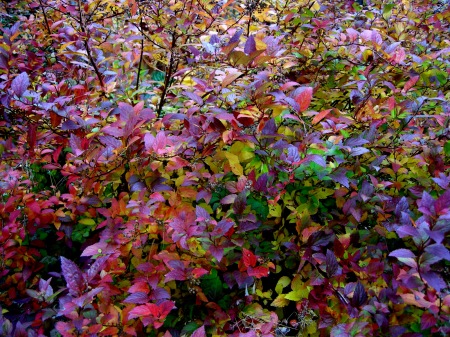 the view from our deck right now
the view from our deck right now
The ground never froze during our incredibly warm winter here at Carolyn’s Shade Gardens. All our plants are blooming early and, due to the cool weather we are experiencing now, they are lasting a long time. We still have hellebores in bloom that started in January along with primroses that usually flower in late April or early May and everything in between. Our gardens are filled with a tapestry of beautiful flowers, so I thought it would be a good time to show some long views of our garden beds rather than focusing on individual plants.
I am dedicating this post to Bill, Ben, Joe, Sue, and Larry at the Bryn Mawr Post Office and all their colleagues across the country who continue to work despite risk of infection so that we get our mail every day. In the face of their dedication, any sacrifice that we are asked to make seems minor. Please stay home to save lives.
Nursery News: Carolyn’s Shade Gardens is a retail nursery located in Bryn Mawr, PA, specializing in showy, colorful, and unusual plants for shade. The only plants that we ship are snowdrops within the US. For catalogues and announcements of local events, please send your full name, mailing address, and cell number to carolyn@carolynsshadegardens.com and indicate whether you are interested in snowdrops. Click here to get to the home page of our website for catalogues and information about our nursery and to subscribe to our blog.
. This is the view from our living room window along the terrace outside our front door. in the foreground is ‘Magic Carpet’ spiraea and ‘Goldheart’ old-fashioned bleeding-hearts while ‘Texas Scarlet’ quince remains in full bloom at the back.
This is the view from our living room window along the terrace outside our front door. in the foreground is ‘Magic Carpet’ spiraea and ‘Goldheart’ old-fashioned bleeding-hearts while ‘Texas Scarlet’ quince remains in full bloom at the back.
.
 ‘Diana Clare’ pulmonaria, ‘Raspberry Rhapsody’ epimedium, Japanese painted fern, and lamium
‘Diana Clare’ pulmonaria, ‘Raspberry Rhapsody’ epimedium, Japanese painted fern, and lamium
.
 Although the yellow hellebores in the back left have faded a bit, the blue Siberian squill continues to bloom while native ‘Sherwood Purple’ creeping phlox begins to open and ‘Aureola’ hakone grass shows its bright gold color.
Although the yellow hellebores in the back left have faded a bit, the blue Siberian squill continues to bloom while native ‘Sherwood Purple’ creeping phlox begins to open and ‘Aureola’ hakone grass shows its bright gold color.
.
 The woodland is glorious right now.
The woodland is glorious right now.
.
 Spring vetchling (Lathyrus vernus) on the left, hellebores, and native Celandine poppies
Spring vetchling (Lathyrus vernus) on the left, hellebores, and native Celandine poppies
. I love the combination of yellow and white in the spring. Here the white flowers of summer snowflake in the back left, European wood anemones in the center, and Dutchman’s breeches in the right corner are surrounded by native Celandine poppies.
I love the combination of yellow and white in the spring. Here the white flowers of summer snowflake in the back left, European wood anemones in the center, and Dutchman’s breeches in the right corner are surrounded by native Celandine poppies.
. native Virginia bluebells with Celandine poppies on the left and yellow European wood anemone on the right
native Virginia bluebells with Celandine poppies on the left and yellow European wood anemone on the right
. The lovely pink spring color of ‘Butterfly’ Japanese maple on the right of the stairs to our deck echoes the flower colors of ‘Mohawk’ viburnum, old-fashioned bleeding-hearts, and pink hellebores on the left.
The lovely pink spring color of ‘Butterfly’ Japanese maple on the right of the stairs to our deck echoes the flower colors of ‘Mohawk’ viburnum, old-fashioned bleeding-hearts, and pink hellebores on the left.
.
 Along the deck, white corydalis, black-flowered and ‘Penny’s Pink’ hellebores, yellow primroses, and pale blue spring starflower (Ipheion uniflorum).
Along the deck, white corydalis, black-flowered and ‘Penny’s Pink’ hellebores, yellow primroses, and pale blue spring starflower (Ipheion uniflorum).
.
 spring starflower, yellow primroses, and hellebores
spring starflower, yellow primroses, and hellebores
.
 Orange flowered Epimedium x warleyense on the left, native yellow violets in the middle, and ‘Yubae’ epimedium on the right.
Orange flowered Epimedium x warleyense on the left, native yellow violets in the middle, and ‘Yubae’ epimedium on the right.
.
 Looking up our back hill, ‘Pink Elf’ epimedium in the foreground with pulmonaria and the fresh colors of newly emerged miniature hostas.
Looking up our back hill, ‘Pink Elf’ epimedium in the foreground with pulmonaria and the fresh colors of newly emerged miniature hostas.
Blogs are a lot more fun for everyone, especially the writer, when readers leave comments. Scroll down to the end of the page to the box where it says “Leave a Reply” and start typing—-it’s easy!
Carolyn
Notes: Every word that appears in orange on my blog is a link that you can click for more information. If you want to return to my blog’s homepage to access the sidebar information (catalogues, previous articles, etc.) or to subscribe to my blog, just click here.




















